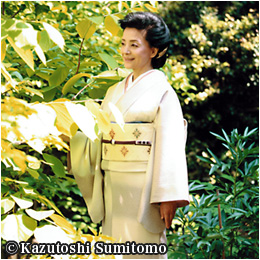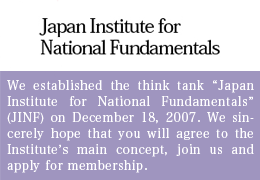Japan Should Manage the “Senkaku Crisis” Calmly and Resolutely
How should Japan cope with China’s persistent military provocations in Japanese territorial air space and waters around the disputed Senkaku Islands?
First and foremost, we must bear in mind that China’s challenge will continue until its claim over the territorial sovereignty of the uninhabited Senkaku Islands in the East China Sea (called the Diaoyus by the Chinese) is resolved one way or another. We must prepare ourselves for tenacious Chinese provocations until we absolutely establish our territorial sovereignty over the Senkakus, allowing China no chance whatsoever to refute it – or until China forcibly wrests the islands from Japan.
A quick look at the history of Chinese aggression in the South China Sea since the early 1970s shows the modus operandi of the Chinese Communist Party (CCP), which never backs off or gives up any of its territorial claims. In point of fact, China has plundered islands and territorial waters in the South China Sea, ignoring all objections and resistance from other nations in the region, ruthlessly overpowering its adversaries.
The real purpose of such acts on the part of the CCP is not just securing natural resources. The ultimate purpose of China’s maritime expansion is implementation of its national strategy to first be on a par with the US militarily, and then surpass it. The conflicts in the East China Sea and the South China Sea are local battles, so to speak, in a broader strategic framework. That is why China will never budge.
Policies pursued by Xi Jinping since assuming the post of the CCP’s Secretary General last November makes one surmise China would not hesitate to take military action vis-à-vis the Senkaku dispute.
The points Xi emphasizes can be condensed into three elements: (1) Sinocentrism, (2) the CCP’s supremacy over the law, and (3) a priority on military affairs. As for point (3), Xi has actually urged the People’s Liberation Army (PLA) on several occasions in the past three months to “utilize military power in peace time,” and to “enhance combat preparedness.”
A call for the use of military power in peace time is certainly disquieting. It is synonymous with an order to brazenly achieve China’s objectives by simply disregarding international rules and regulations. It constitutes an abnormal and belligerent instruction completely removed from the norm for a major power, which China claims to be.
Xi has continued to talk tough even after a Chinese navy frigate locked weapons-targeting radar on a Japan Maritime Self-Defense Force (JMSDF) helicopter on January 19 and on a JMSDF escort ship on January 30 in the East China Sea. The state-owned Xinhua News Agency in its February 6 dispatch reported that Xi visited military facilities in the Gobi Desert, including an air force base and the Jiuquan Satellite Launch Center, on February 2 and 4, urging the military to “enhance combat preparedness.” The drastic measure taken by the PLA – that of locking fire-control radar on the high seas – ought to be construed as reflecting Xi’s tough-line policy.
Intelligence Operations Should Be the Pillar of Japan’s International Strategy
On the other hand, some Japanese quarters look at the incident differently. They wonder if the Chinese leadership might not in fact have had any knowledge of the radar lock-on because, when Defense Minister Itsunori Onodera broke the news in an urgently called news conference on the night of February 5, the Chinese government reacted “all in a fluster.”
I have no evidence at hand to render a decisive conclusion as to the incident. However, I believe I can safely raise two important points. My first point has to do with a claim repeatedly made in Japan that the Chinese government apparently had not been aware of the extreme step taken by the PLA, and, therefore, Japan should take not-so-tough measures towards China by taking that into consideration. Such an approach, which has been employed in dealing with China over the Senkaku dispute in the past, has produced no solution, proving extremely disadvantageous to Japan’s interests.
My second point calls for realistic thinking; as regards the radar lock-on, there is a great possibility that, as referred to earlier, the PLA implemented the lock-on, single-mindedly believing it to be a step that would faithfully follow the wishes of General Secretary Xi, even if there was no specific instruction from the Chinese government.
In response to the Japanese government’s dissemination of the information on the incident, China refrained from aerial and maritime provocations around the Sensakus for three straight days from February 6. On February 9, however, two Chinese air force fighters flew close to Japanese territorial air space over the Senkakus. Then, on the following day, four State Oceanic Administration surveillance ships (the Haijians) entered the contiguous zone, leaving the area on February 11. While accusing Tokyo of disseminating “fabrications” concerning the incident, the Chinese government made up its mind to resume its hard-line policy towards Japan.
It has for years been China’s ploy to put all the blame on its counterparts in dealing with territorial disputes. In point of fact, when a Chinese trawling boat rammed a Japanese Coast Guard patrol boat on September 7, 2010, off one of the Senkaku islands, the Chinese government concocted a story that was exactly the opposite, having the Xinhua News Agency report that it was a case in which the Japanese Coast Guard vessel rammed the Chinese fishing boat.
Because Naoto Kan and Yoshito Sengoku, who respectively were prime minister and chief cabinet secretary at the time, refused to release a video containing the scenes of the incident, there were growing voices at home and abroad that wondered if the Chinese claim might not be more credible, as Beijing kept denouncing Tokyo.
It was Masaharu Isshiki, a member of the Coast Guard, who finally shattered this wall of lies of the Chinese government. Only when Isshiki, who had copied footage of the collisions at work and felt compelled to let the truth be known, posted clips on YouTube, did the entire Japanese nation – and the world, for that matter – realize that the Chinese government was lying. Full public disclosure of pertinent information is the most effective tool to shatter the lies repeatedly told by China.
In this regard, it was appropriate that Prime Minister Shinzo Abe, upon receiving reports on the radar lock-on, swiftly instructed Defense Minister Onodera to disclose all the facts available at that stage. As a nation which rigidly restricts the use of weaponry, Japan should gather and disseminate critical intelligence far more vigorously than any other nations. It has regrettably failed to do so in the past, but I firmly believe that, with this recent incident in mind, such operations must be established as the pillar of Japan’s international strategy going forward.
Defeat ultimately awaits a nation that fails in the “war of words.” Japan must use all of its resources at hand to aggressively “get out the facts” and make sure its positions on major issues are well understood by the international community.
Wisdom of Leaving Action to Discretion of Those on the Scene
Simple words, however, of course would not be enough. Japan must improve its capability vis-à-vis the defense of the 1,200-kilometer island chain known as the Nansei islands, which includes the Senkakus and stretches from Kyushu to Taiwan. Although the amount is small, the Abe administration has increased this year’s JSDF budget by \400 million (approximately US$4.5 million) to prepare for an impending crisis. Although modest, the belated increase has finally put a stop to annual defense budget cuts over the past eleven years, and should help raise the morale of the troops on the scene. The increase is also believed to have sent a message to China that Japan is determined to not budge an inch when it comes to safeguarding the sovereignty of its territorial air space, land, and waters.
In that vein, the steps taken by the Abe administration should be given due credit. However, the administration must also establish a legal environment in which the JSDF can satisfactorily implement its original mission of safeguarding national security. When he ran his first cabinet five years ago, Abe set up an informal gathering of experts charged with discussing matters relating to a re-establishment of the legal foundation for pursuing peace and security. The panel came up with four scenarios that would enable Japan to exercise the right to collective self defense. Each of them, I believe, is important. But I frankly feel it would be rather difficult to say whether such reform would enable the JSDF to be fully utilized in case of an emergency.
The JSDF is legally structured in the same way as the police, governed under the rule of the so-called “positive list,” allowing it to implement operations only when certain conditions are met.
Meanwhile, armed forces elsewhere in the world are free to implement plans of operations to achieve specific missions based on the discretion of those on the scene – so long as the rules pertaining to a certain set of “don’ts” are honored. These “don’ts” are collectively referred to as the “negative list.”
The real reform needed for the JSDF is to make it a military force whose actions are regulated by the “negative list” in the same way as in other nations.
I wonder if adding the four scenarios to the old “positive list” may not in effect further complicate discussions as regards the right to collective self defense.
(Translated from “Renaissance Japan” column no. 546 in the February 21, 2013 issue of The Weekly Shincho)








